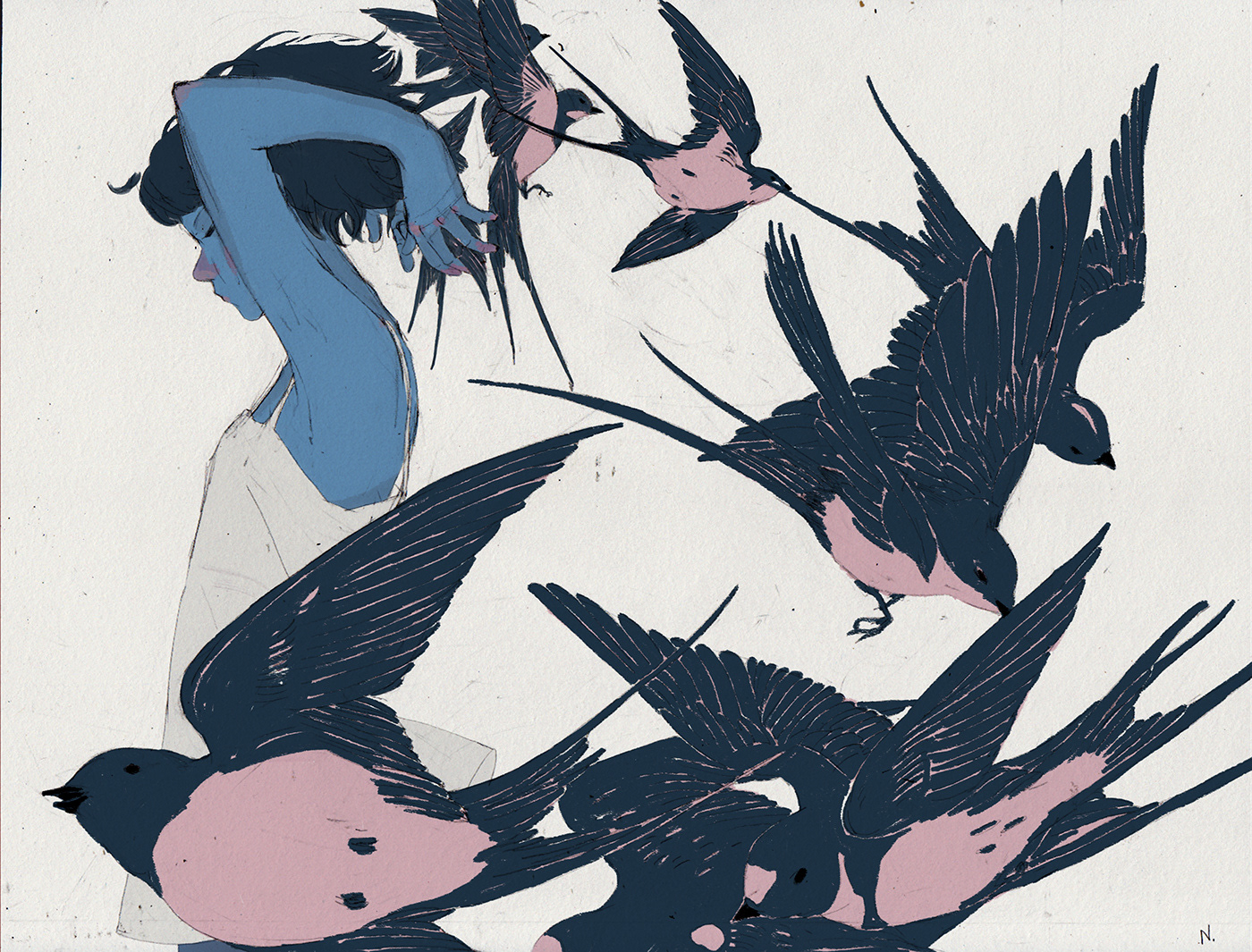Alcatraz in the Abstract
Gareth Bogdanoff

I have been living in the Bay Area for almost ten years now, and I see Alcatraz island all the time. I always knew that I would get around to visiting eventually. I have been to most of the touristy places in San Francisco, but Alcatraz is a little bit harder to get to. You have to buy tickets in advance and take a ferry. You can’t just go over there on a whim. Besides, it always looks so grim from a distance, did I really want to go there that badly?
Well, currently there is an installation art exhibition by the great artist and activist Ai Weiwei. The exhibit will end on April 26, 2015, so as of this writing, there is very little time left to go see it. For me, this was the perfect excuse to go and visit Alcatraz, and the infamous prison that is now such a popular tourist destination.
The first thing that struck me about the island is how beautiful it is. It may look uninviting from a distance, but there are diverse bird populations, lovely gardens, and stunning views of the city. But that’s another story. After the brief orientation given by a National Park Service ranger, my girlfriend and I headed straight for the first of the art exhibits.

Ai Weiwei entices visitors to his installation with a giant dragon kite. It is easy to appreciate the kite for its simple beauty, but if you look closely, it is decorated with quotes by various free speech activists. When visitors move on to the next room, they find a much more challenging exhibit. The floor in this room is covered with LEGO portraits of political prisoners from around the world. The portraits spark curiosity. Who are these people? Can there really be so many political prisoners in the world, locked up because of something they said, or something they believe?
This exhibit is set in the New Industries building, not the main prison building. This is where prisoners could work for money, by making clothing, furniture, and Army uniforms, among other things. Even so, the location is poignant. Prisoners here would have worked the day away, with tantalizing views of the outside world, only to go back to their cramped cells at night.



For me, there was another fascinating level to the exhibit, and that was watching the visitors interact with the exhibit. Some walked solemnly through the rows of portraits, reading the biographies which were posted in books at the end of each row. Others breezed through carelessly, taking selfies and talking noisily.
It was also cool just to see the inside of the New Industries building, which is usually closed to the public. All around the exhibit are panes of broken glass, and rusty nails sticking out of walls. I love to photograph these kinds of things, but my excitement was dampened by the sight of dozens of tourists taking the same exact photographs that I wanted to make. I knew that I would have to work a bit harder to make meaningful photographs here.
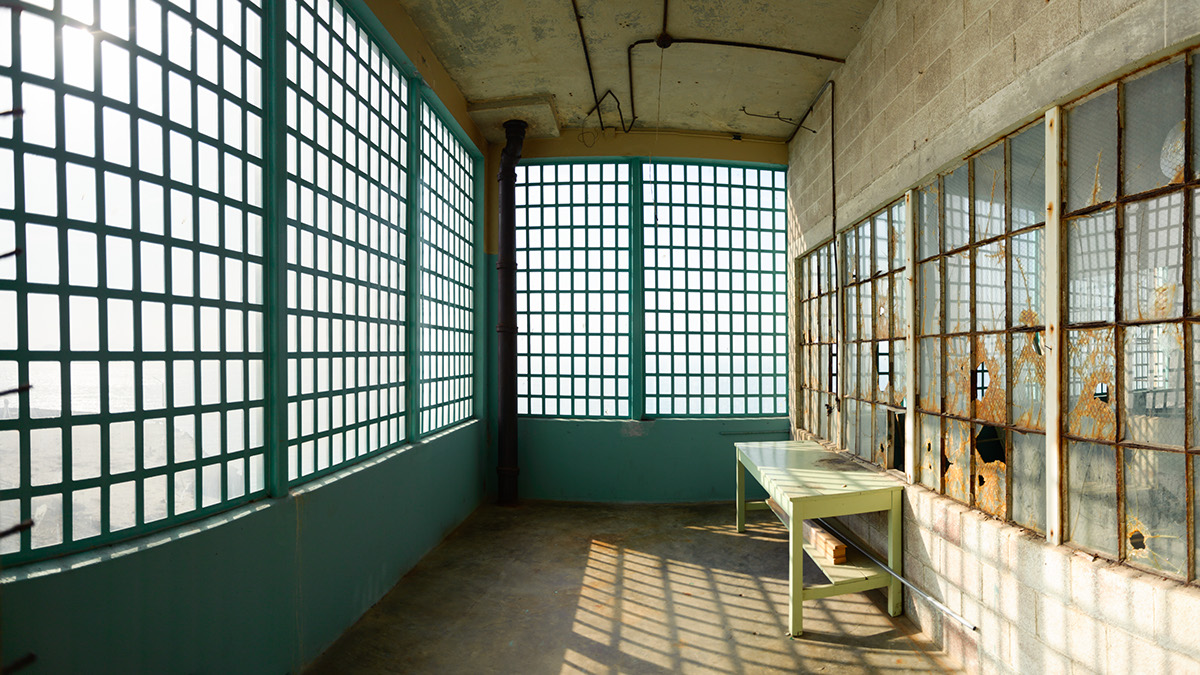


After lunch, we walked around the outside of the main prison building, and then went inside to see what else Ai Weiwei had in store. The Alcatraz hospital is also normally closed to the public, but this was the location that Ai Weiwei chose for his exhibits Illumination and Blossom.






For Blossom, Ai Weiwei had delicate porcelain flowers arranged in the sinks and toilets. Most of the rooms were closed, and I had to strain to see the arrangements at all. But when I could get close enough to see them, the contrast between the beautiful flowers and the disgustingly stained fixtures was startling.
Once again, there were dozens of tourists taking the same photographs that I was. How could I make photographs that spoke of what I felt, and not just what I saw? I decided to try a technique that I have used before to make abstract photographs. I set my camera to a slow shutter speed, and began intentionally moving the camera during the exposure. Now I was getting somewhere. The resulting images spoke to the uneasiness and disorientation that I felt.
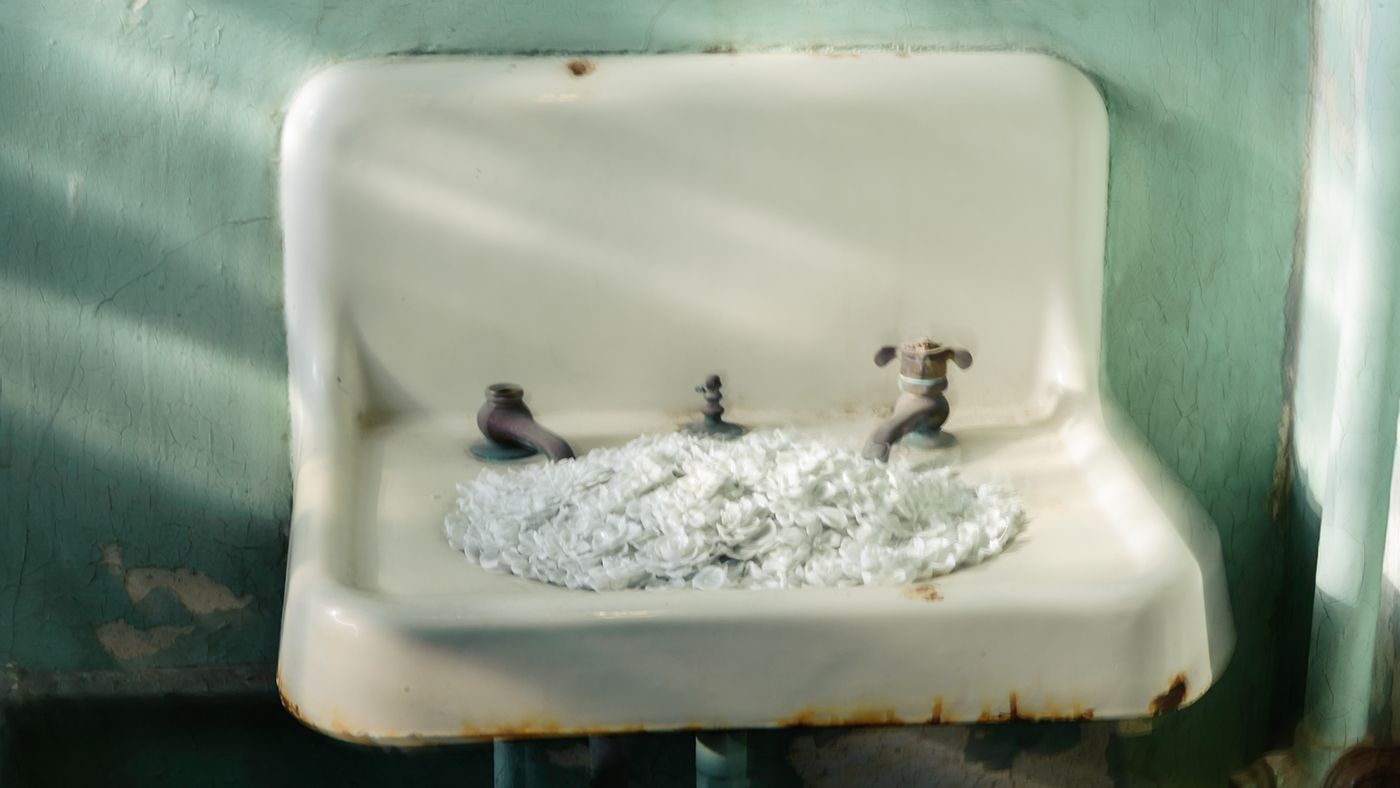
If I had been there to document the art installations, this technique would not have been an option for me. But I was shooting for my own pleasure.
While in the hospital, I could hear spooky, and sometimes thunderous sounds coming from down a dark hallway. This was Illumination, Ai Weiwei’s next installation. The sounds of Tibetan and Native American chants echoed off the walls of the hospital’s two psychiatric observation cells. Here was an art exhibit that I could not photograph. Just tiny dark rooms with windows that seemed to suck the light out of the room rather than illuminate it.






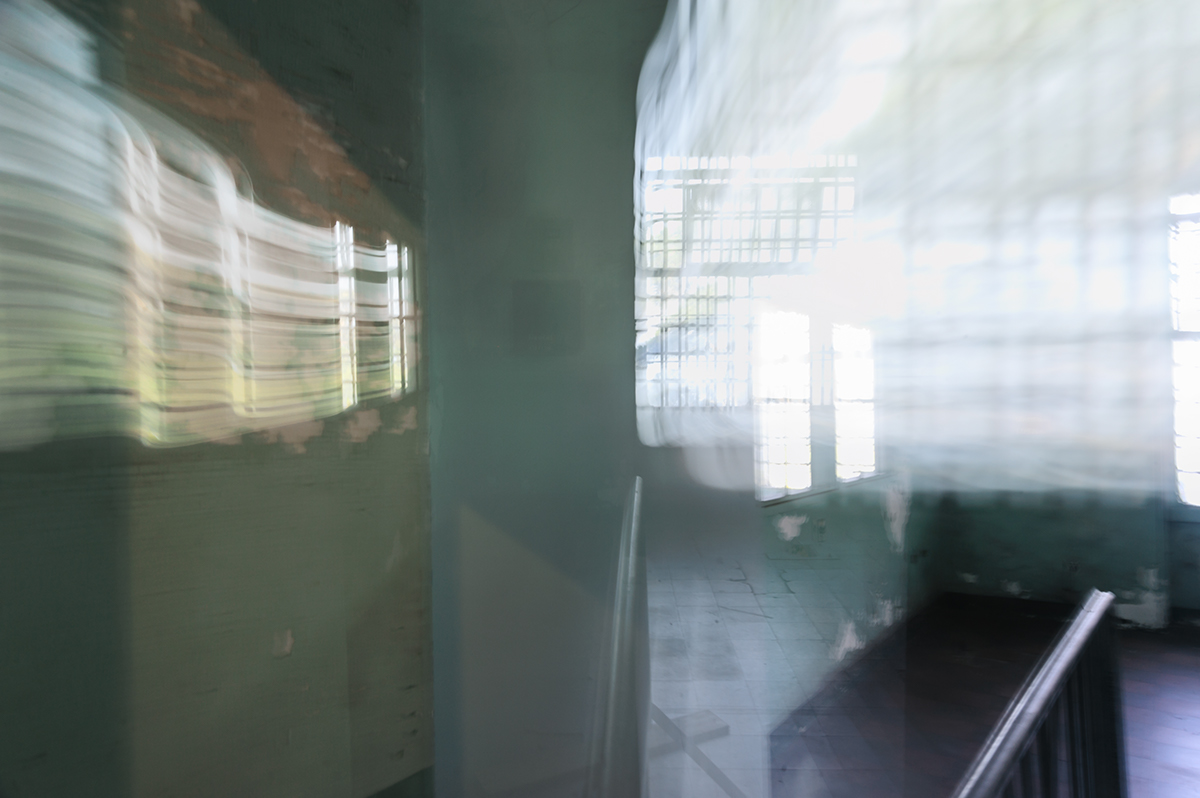
In the cellhouse, I continued to make abstract photographs. As fascinating as it is to see the prison that I have seen so often on TV, I couldn’t help wanting to leave. It was a lovely day outside, and inside was so grim. But now I was having fun making photographs again. In addition to intentional camera movement, I experimented with double exposure. Whether I succeeded in capturing a feeling, or simply reinterpreting the scene before me, I was exploring the prison in a new way.


The final exhibit that we visited was called Stay Tuned, another audio installation. Each cell in the A block had the sounds of music, speeches, or poetry made by people who were locked up for expressing their beliefs. Here, visitors either moved slowly from one cell to the next, trying to experience the exhibit fully, or they breezed through and left confused. The cells were stark. Many had been stripped of fixtures entirely, except for a wooden stool added to allow visitors to sit and listen. Sound was piped in through the air vent in each cell, but it seemed to come from all around.








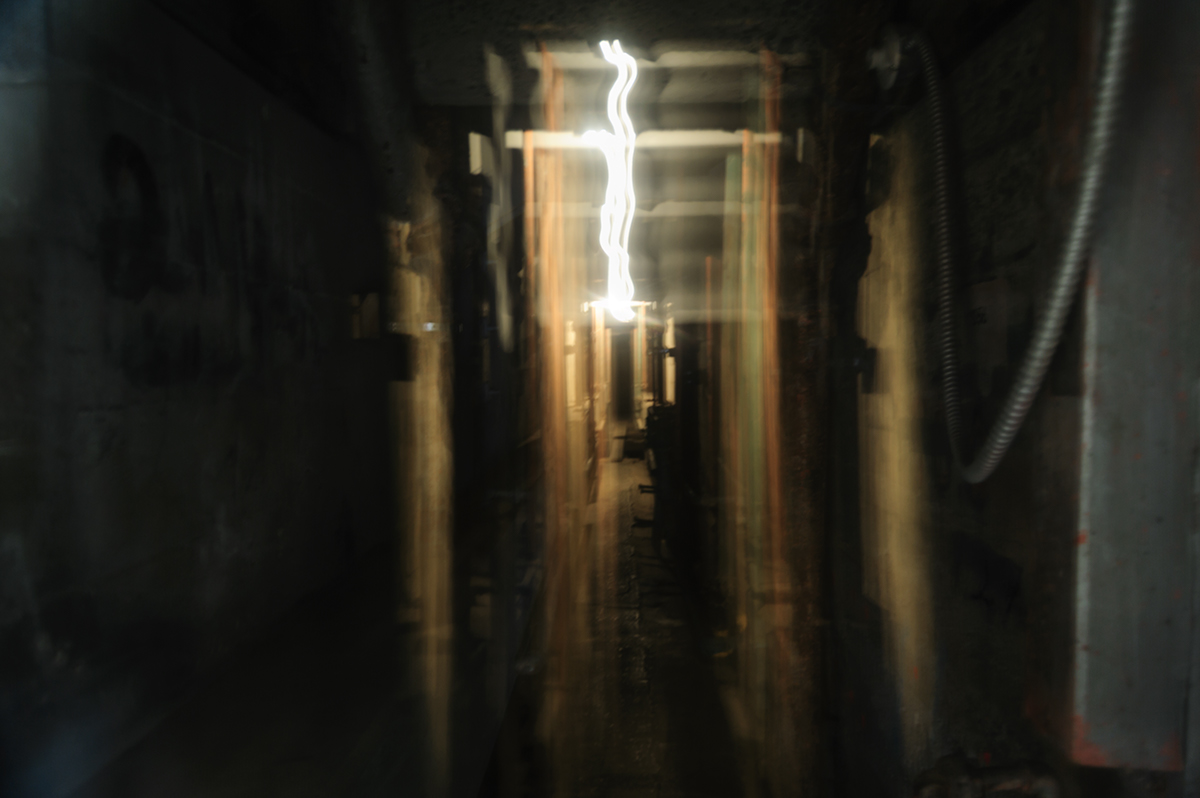
It is easy for me to second guess my own intentions in creating this unusual set of photographs. I often do not “get” abstract art myself, and it feels weird to me that I would enjoy making it. I hope that, if nothing else, this will be a learning experience for me as a photographer, and I certainly hope that you enjoy these images as much as I enjoyed making them.


